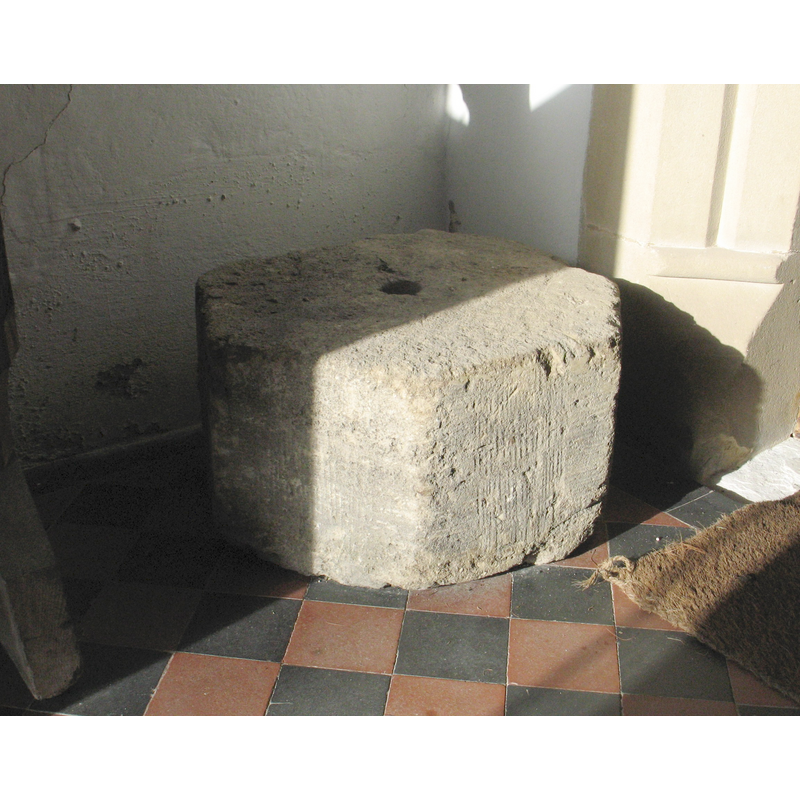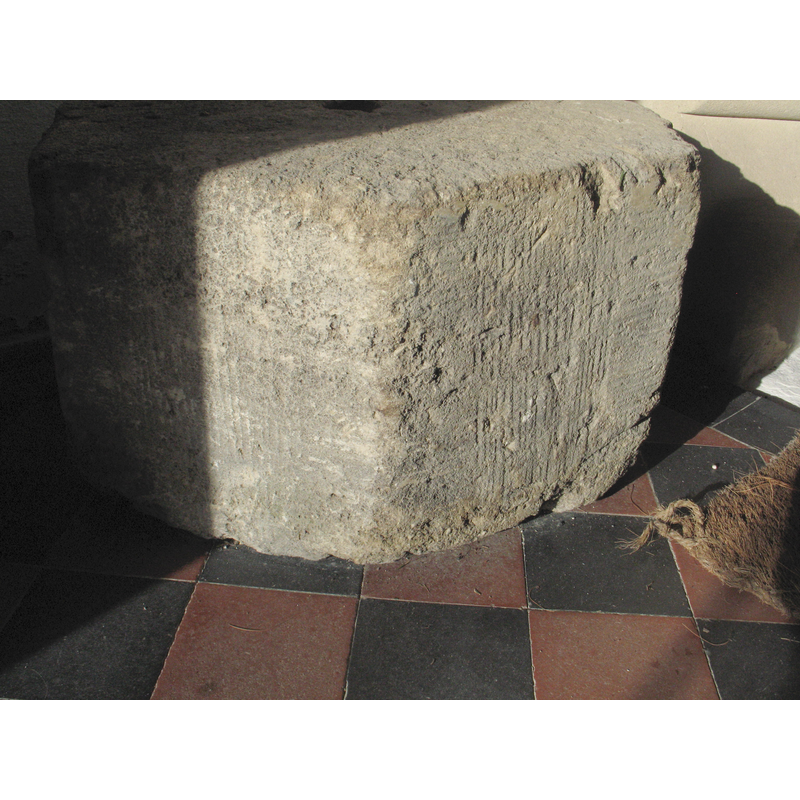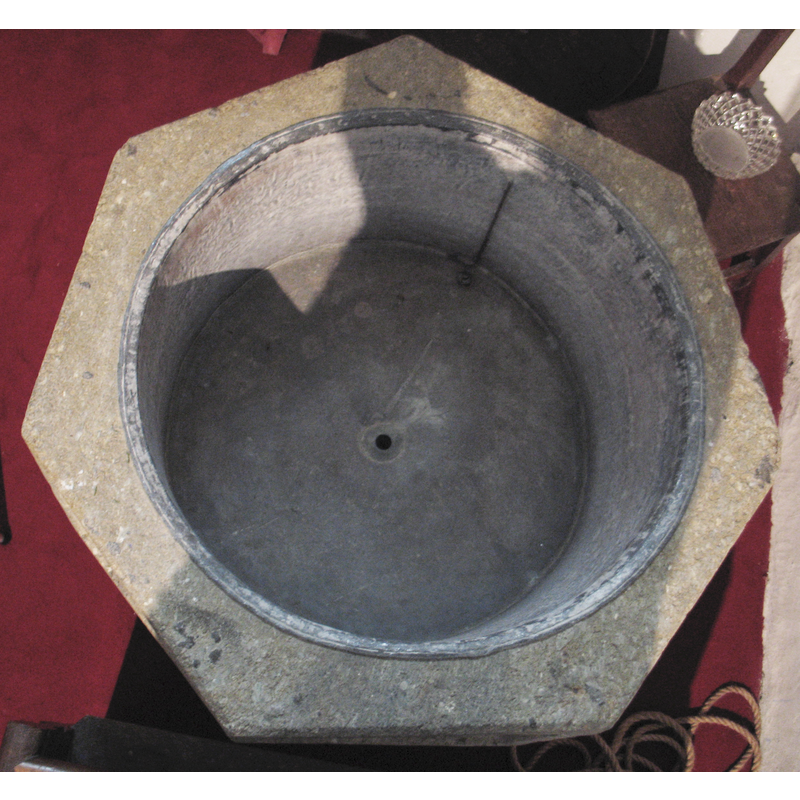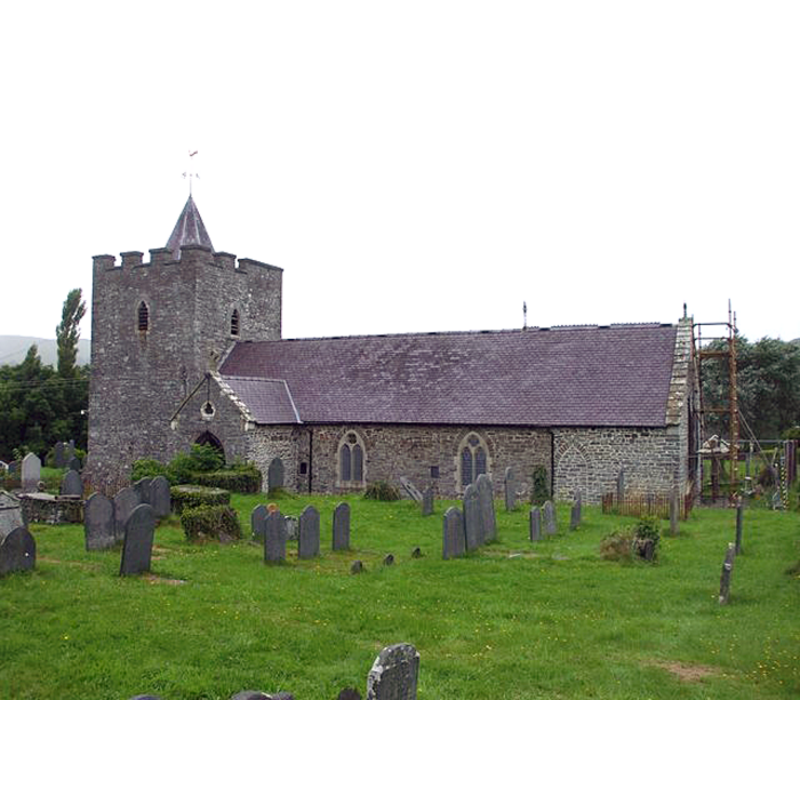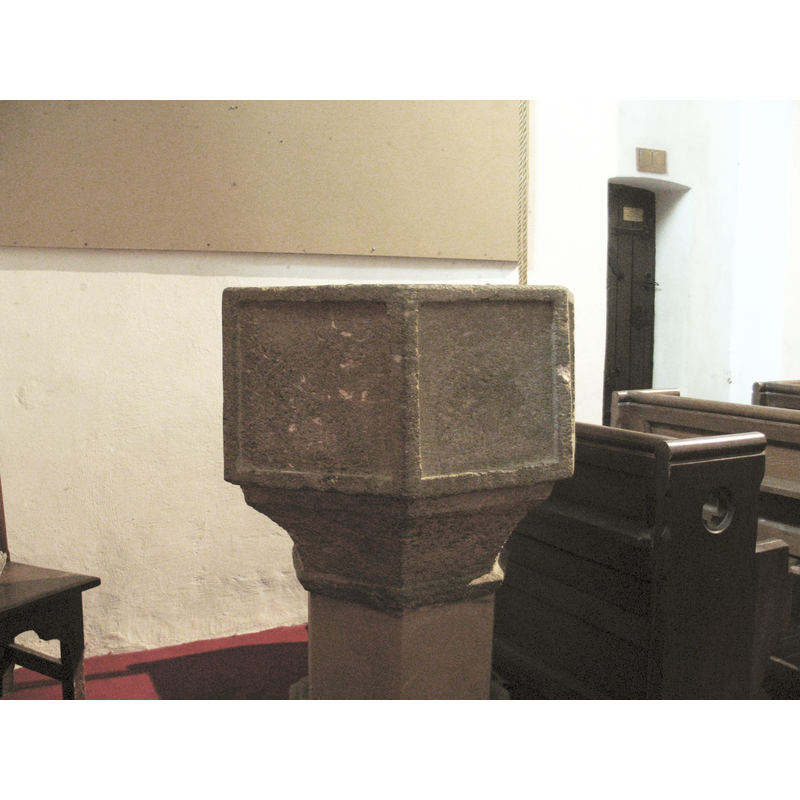Llanilar
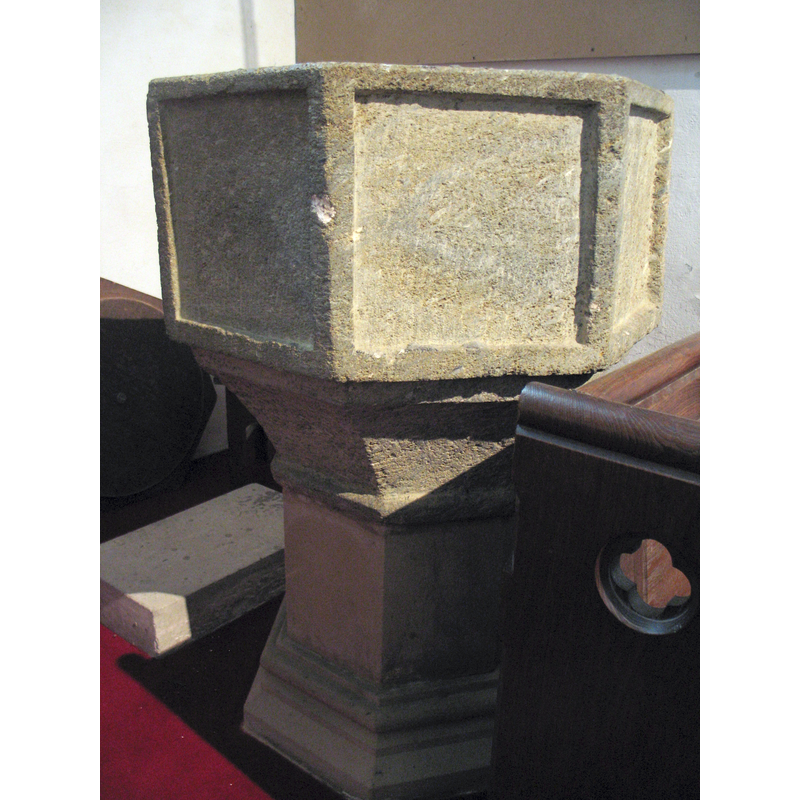
Image copyright © Madeleine Gray, 2013
Image and permission received (e-mail of 12 September 2013)
Results: 8 records
design element - motifs - moulding
design element - motifs - panel - blank - 7
view of base
view of base - detail
view of basin - interior
view of church exterior - south view
view of font
INFORMATION
FontID: 05862LLA
Object Type: Baptismal Font1
Church/Chapel: Parish Church of St. Hilary / Eglwys Ilar Sant
Church Patron Saints: St. Ilar Bysgotwr? [Evans (1914) claims the advocation to St. Hilart of Poitiers is erroneous]
Church Location: Llanilar, Ceredigion, Wales
Country Name: Wales
Location: Ceredigion
Directions to Site: Located at the A485-B4575 crossroads, 10 km ESE of Aberystwyth
Ecclesiastic Region: Diocese of St. David's
Historical Region: Hundred of Ilar -- formerly Cardiganshire
Font Location in Church: Inside the church, at the W end of the nave [cf. FontNotes]
Century and Period: Late Medieval
Workshop/Group/Artisan: heptagonal font
Cognate Fonts: Tregaron and Pendine, both in Wales, are also heptagonal
Credit and Acknowledgements: We are grateful to Dr. Madeleine Gray, of the School of Education/Ysgol Addysg, University of Wales, Newport/Prifysgol Cymru, Casnewydd, for her information on, and photographs of this font
Church Notes: church restored in 1874; additional restorations planned in 2012
Font Notes:
Click to view
The entry for Llanilar in Meyrick (1808) mentions "an ancient stone for holding holy water" on the porch, but no font. Listed in Tyrrell-Green (1928) as one of a few examples of heptagonal baptismal font: "There is a drawback attaching to a figure with an uneven number of sides, in that the whole turns to appear off the centre when seen from certain points of view, and this blemish no doubt accounts for the fact that a heptagonal form was seldom adopted for the form". Tyrrell-Green (ibid.) lists the fonts at Llanilar, in the same county, and Pendine in Carmarthenshire, as heptagonal as well. Described and illustrated in Gray (2012) as one of three heptagonal fonts in Wales [BSI lists three other in England and one in Scotland]: "The carving of the bowl is sharp and geometrically accurate but the upper part of the bowl is misaligned on the base. The stone is a sedimentary conglomerate with shaly flakes of Cilgerran slate embedded. Tim [Palmer] noted that a similar stone was used at St Dogmael’s Abbey. It is a very coarse and rough stone, not an easy material for decorative carving but good for geometric shapes. [...] the design of plain incised panels is unusual and could have been intended to hold decorative panels of wood or some other medium.The base of the font is now stored separately, in the porch [...] it is Dundry stone [...] Why a base in Dundry and a shaft and bowl in the sedimentary conglomerate?" The heptagonal basin has a long chamfer with a moulding at its end; the present base is a modern plain pedestal with a moulded lower base. There is no evidence of cover hardware on the upper rim of the basin. The base that Gray reports in the porch [cf. supra] appears to be hexagonal and ill-suited to accommodate the heptagonal basin; it has a drain hole going down its centre. [NB: the old base in the porch does not seem to match the basin isnide in any way; was it the base of a different font?]
COORDINATES
Church Latitude & Longitude Decimal: 52.356635, -4.022214
Church Latitude & Longitude DMS: 52° 21′ 23.89″ N, 4° 1′ 19.97″ W
UTM: 30U 430384 5801197
MEDIUM AND MEASUREMENTS
Material: stone, conglomerate (sedimentary)
Font Shape: heptagonal (mounted)
Basin Interior Shape: round
Basin Exterior Shape: heptagonal
Drainage Notes: lead-lined
Diameter (includes rim): 82-83 cm*
Basin Total Height: 37-40 cm*
Notes on Measurements: * Gray (2012)
LID INFORMATION
Notes: [cf. FontNotes]
REFERENCES
Gray, Madeleine, "Seven for the Seven Sides on the Font", 9 (March 2012), Newsletter (Fforwm Cerrig Cymru/Welsh Stone Forum), 2012, pp. 9-11; 9-11
Tyrrell-Green, E., Baptismal Fonts Classified and Illustrated, London: Society for Promoting Christian Knowledge: The Macmillan Co., 1928
